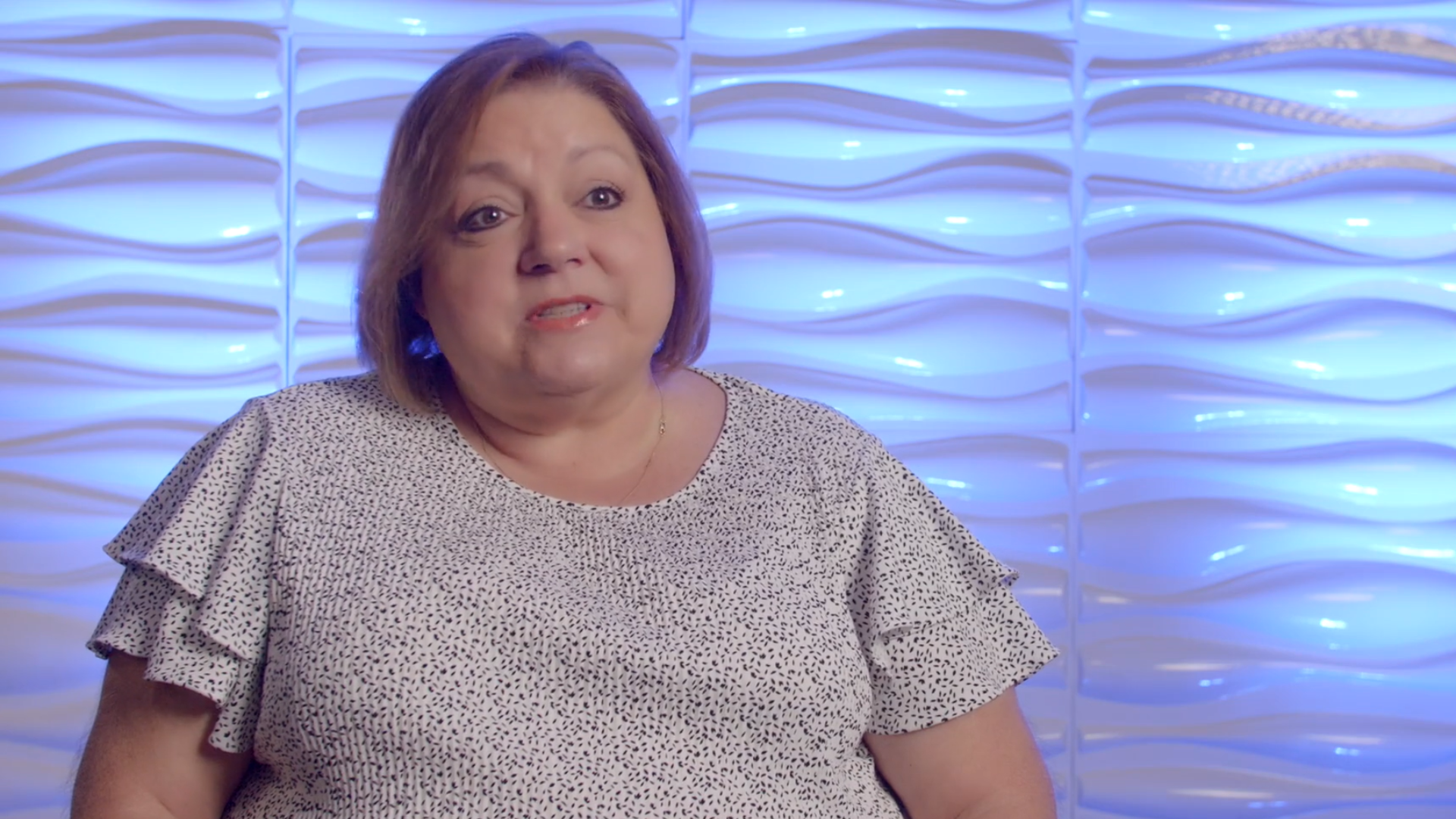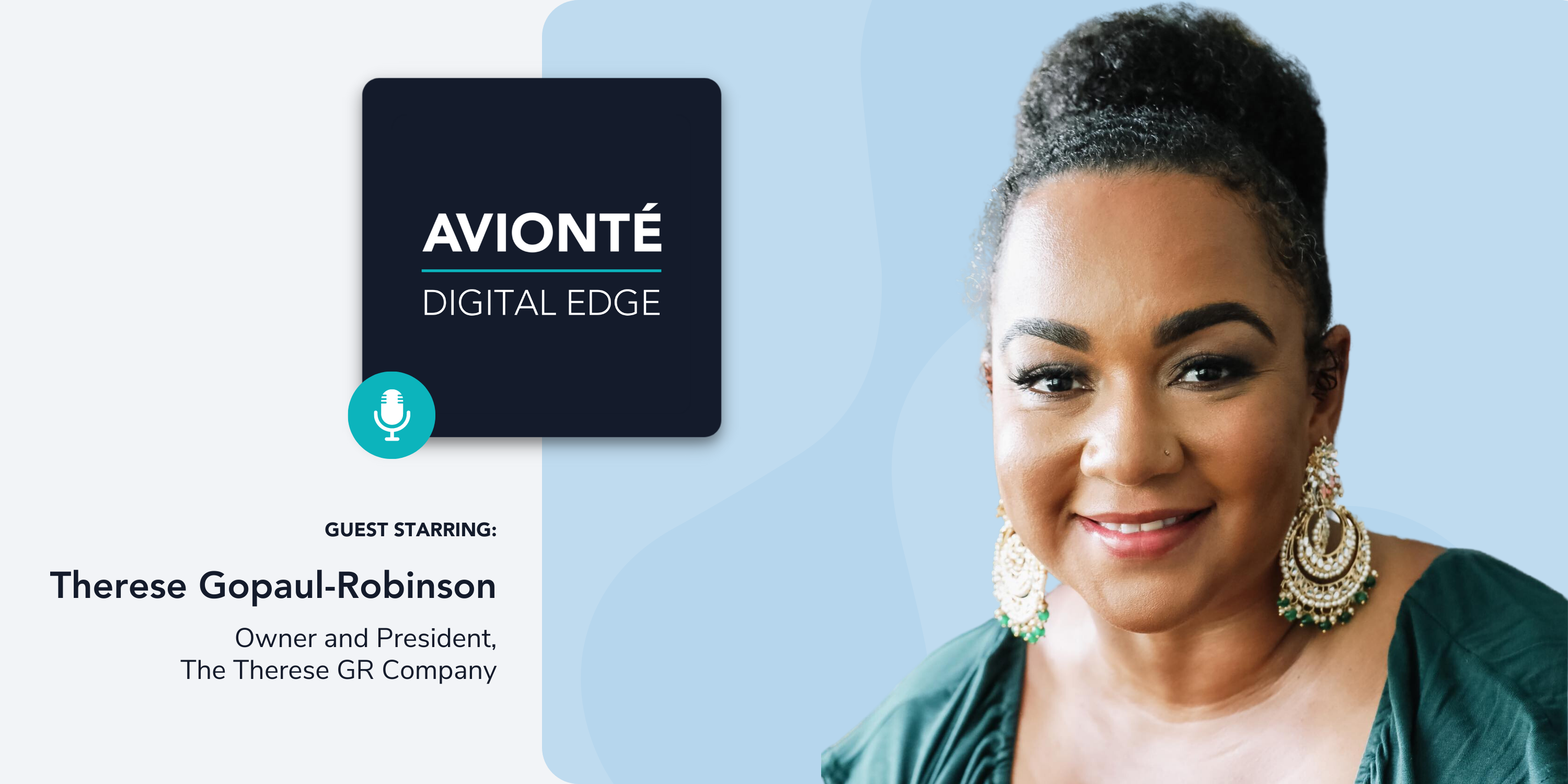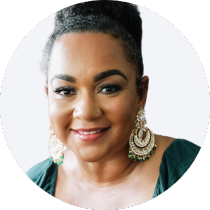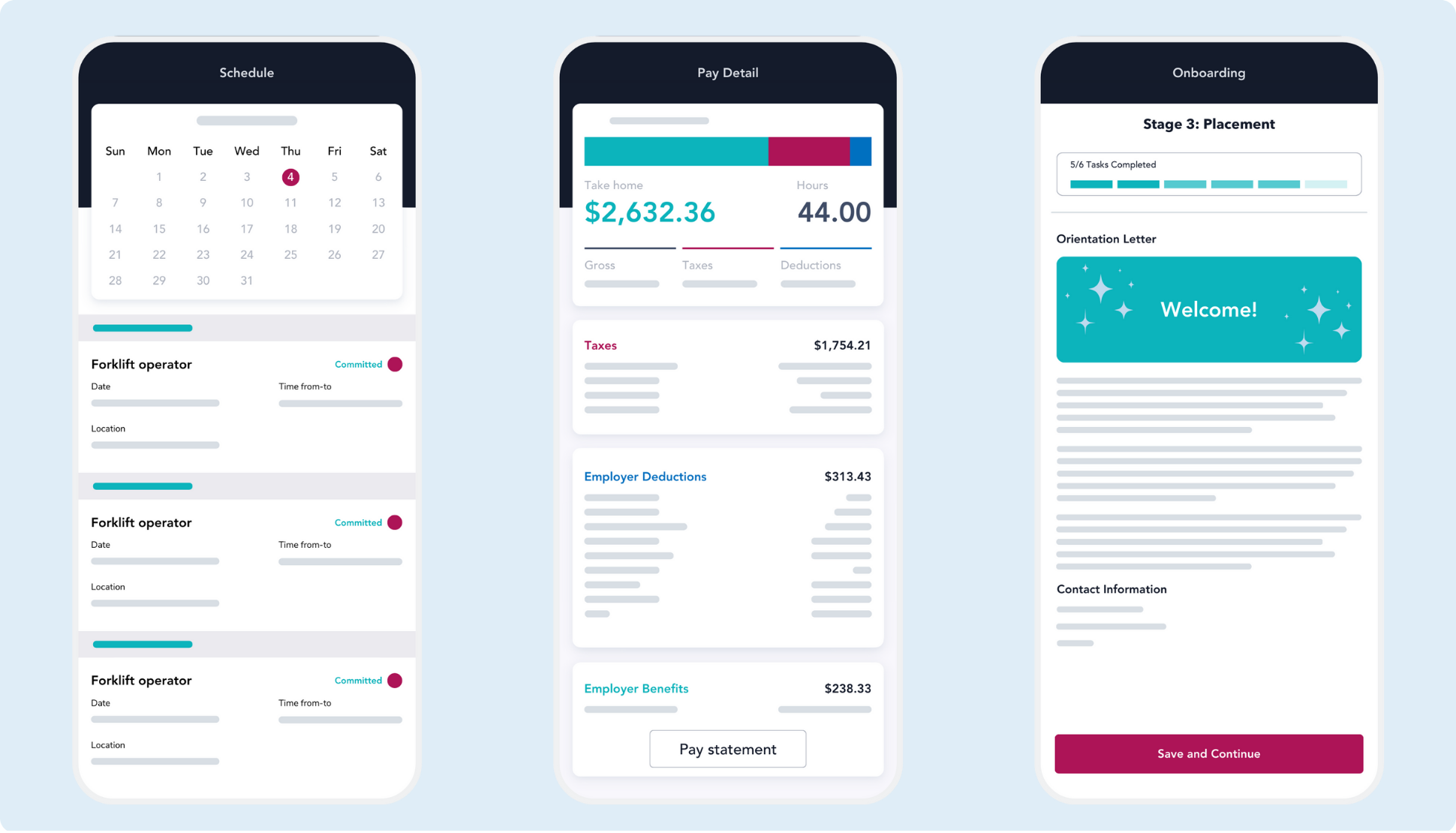In the fast-paced world of healthcare staffing, where nurses are in high demand and turnover is soaring, placing a provider into a new work assignment can be challenging for any healthcare staffing agency. The burden of collecting and verifying anywhere between 40 to 60 separate credentials has created a deluge of paperwork, hindering an agency’s ability to effectively engage and retain nurses.
To address these pressing issues, join Christopher Ryan, Avionté’s Chief Strategy & Marketing Officer, as he speaks with seasoned industry professional, Therese Gopaul-Robinson, Owner and President of The Therese GR Company. Together, they’ll explore innovative strategies to revolutionize healthcare credentialing and create a faster, more convenient experience when placing medical talent.
This is a partial transcript of the full conversation. Listen to the podcast episode for the complete discussion.
Chris: What is so important about credential practices to the entire process of healthcare employment?
Therese: It’s so incredibly important to our healthcare system. It’s ensuring that patients are cared for by qualified individuals. There are so many things that go into qualifying and validating these folks. It is a field that needs to be appreciated and respected because, at the end of the day, whoever is at the bedside, before they could get there, they had to be credentialed. There are just so many steps that need to happen, so many boxes that need to be checked, to really ensure that they can do what they say they can do.
Chris: So, even when you were managing credentials, effectively, you were assisting in the delivery of high-quality patient care?
Therese: Yes, that’s 100 % accurate. And, absolutely, as a secretary in the medical staff services department, I was responsible for ensuring that patients got the care that they needed through credentialing. Ensuring that if it was some sort of specialized physician, that I validated those qualifications and followed the trail from the very beginning to the end to ensure that that physician could get to the bedside and care for those patients.
Chris: And you had said once said that for every hour you spent looking for a a qualified healthcare worker, you may spend 5 hours working on their credentials. Is that right?
Therese: Oh yeah, because it’s not just about checking boxes and collecting a piece of paper and filing it away in a cabinet somewhere. Credentialing takes critical thinking. Credentialing takes sleuthing. Credentialing takes the ability to identify personalities in the folks that you’re working with. So yes, it takes a minimum of 5 hours just to get from the from the beginning to the end of the process.
Chris: So, talk to me about the sleuthing process. If you are a detective and you are looking through somebody’s credentials, what is it that you see? Isn’t it enough to say I have the correct license. It’s up to date. What do you see as you’re looking into the record?
Therese: Well, I’m looking for the basic things right? Do I have a license? Did I did I go to school? But I’m also looking for the experience of this clinician. So, how long were they at different facilities? How long did they maintain their privileges if they were a nurse? I’m looking for longevity. Have they been consistent in their careers? I want to see why weren’t you there for longer? Why did you have to move? Did you move from one state to another? Those are red flags for me to dig in a little bit deeper.
Chris: It sounds like you’re looking for the same kinds of patterns that we would also be looking for in an airplane pilot. People often talk about safety risk with pilots, and one of the best predictors of safety risk is how long have they been flying.
So, it sounds like time and type is also highly applicable in healthcare staffing. Did they stay? Have they been doing it for a while? And then, presumably, are they constantly updating their credentials and their knowledge? What makes health care credentialing so challenging today?
Therese: The sheer complexities of the process. In healthcare staffing, we are not just credentialing a registered nurse. We are credentialing a registered nurse who is going into the ICU, who is going to a facility in a particular state and that facility may have specific requirements. So, in order for me as a healthcare staffing organization to credential that one ICU RN, I have to account for facility requirements. If they are part of an exclusive agreement with an MSP. I have to account for the MSPs requirements. Then I also have to account for state requirements, because every state has different things they want for different clinicians based on specialty. And then if there’s certain things that I have to meet to maintain my certification as a healthcare staffing organization. So just for me to credential this one nurse, I have to account for multiple requirements from multiple areas.
Chris: So, there’s an art to credentialing. There’s deep knowledge and deep learning in order to recruit in it. And it sounds to me like credentialing is one of those things that is very challenging to scale and standardize. And, if you’re trying to hire a nurse or a doctor, these are busy people. They’re already in demand. There’s already a major labor shortage. They don’t have a lot of time.
Is it really possible to maintain compliant credentials without putting off your healthcare customers with slow turnaround? How do you transform this and get it to scale? Is it possible to make credentialing more friendly?
Therese: I think it’s all about what you deem is the priority. One of the biggest mistakes I see in healthcare staffing is the organization spends a lot of time, money, and expertise on the attraction phase of the process. So, it’s all about bringing them into the funnel. Where we tend to fall off a little bit is once we’ve attracted them and they’ve committed to us, we haven’t spent enough time building out the back office. We haven’t spent enough time understanding what happens after they say yes. And that’s normally when things fall apart.
So, the organizations that are doing it right give just as much energy to the back office as they do to the front office. So, it’s not just about attracting the right client or the right candidate. It’s about committing to making sure that it’s a good experience all the way to the end.
You have to create a process that is seamless, that they can rely on and trust. And that’s all about your back office. If you nail that then you can totally scale this, and you can make credentialing, I dare say, a fun experience for everyone involved.
Chris: So, take us through a typical healthcare workflow that you see today.
Therese: So, we normally have some sort of client services account that are going to take that information from the client, and then they’re going to communicate that inwardly. So, they’ll say: Jacksonville, Florida hospital, they need these 10 ICU nurses by July 1st. So, we open up these job orders. We get them posted everywhere. We’re doing all of this stuff. Normally, at that time, the facility would say we want this nurse to have at least 2 years’ experience. They must be licensed in Florida and they must have an ACLS and a BLS.
And so the recruiter will take that piece of paper and start recruiting for it. Let’s get as many people into the interviewing process as possible in the hopes that we get 10. That process can take anywhere from a couple of days to a week or so depending on just what that internal pool looks like.
Once we go through that interview process, the nurse will be offered a position or not. And if they choose to accept, we take you over into credentialing. So, we’re a week and a half in and we have maybe five weeks or so to credential this nurse. So, the credentialing team is going to say, “Okay, what else does Jacksonville Hospital need?” And, so at that point, we’re looking to get the client credentials list.
Now mind you that this nurse is probably working right now. The nurse is getting phone calls from other agencies. And that nurse probably has other things going on, and so the longer we wait to communicate, the harder it will be to keep that nurse engaged and so whenever we get the clients requirements now we will communicate that to the nurse.
Chris: But, presumably, sometimes the recruiter is wasting their time and wasting the credentialing department’s time if they don’t ask some questions upfront.
How long does it all take before you can verify that somebody has the right credentials? And how often do people wash out after they’ve been recruited, but before they’ve gotten through the credentialing process?
Therese: So, ideally if you talk to any healthcare staff, they will say the goal is to turn things around within 7 business days. Typically, it’s more like 30. In terms of the percentage of nurses who jump ship before we get them to goal, it’s right at about 25%, if not more depending on the organization.
So, on average, we lose about 25% of those nurses to competitors because it’s either a speed thing or the credentialing process is too confusing.
Chris: Let’s talk about the ideal credential process. Very often, healthcare staffing companies have built out the front office. They’re very good at attracting people. But they haven’t thought as much about the back office process associated with the actual act of onboarding and credential maintenance. If you were building a health care staffing company from scratch, or any place where you need to keep high-quality credentials for both legal and compliance reasons, what would it look like?
Therese: My opinion is this: credentialing starts at the very beginning. When I work with organizations, we typically ensure that, at the very beginning, during that client onboarding process, there is a credentialing representative on hand. So, they’re part of that client onboarding process. This means: “Hey, client in Jacksonville, you want us to fill your needs. We have our credentialing person. We’re going to talk credentials with you as part of the onboarding process to ensure that we understand what it is that you need from us and you understand our process as well. So, we want to make sure that we’re setting you up for success from the very beginning.”
Once we have those jobs posted, another thing that I would love to see is a higher priority for us to educate our recruiters. So, what I want recruiters to know and fully understand is what the time consuming credentials are. If the nurse doesn’t already have it, it may not be the right opportunity for us.
Chris: One of the principles I hear you saying around credentialing is do it once, do it right, and do it upfront.
Make sure that the recruiters have enough of an understanding that they can identify the handful of critical credentials that are most difficult for placement and use those as part of the upfront checklist. And so, if you were able to do those things right there, you’re already ahead of the game.
Therese: Way ahead of the game. Yeah, we’re not blind sighting anyone. So, when nurse Chris is now talking to the credentialing specialist, most of what the credentialing specialists will talk about is not news. He knew that he was going to be in for a pretty intense process and so now you’ve set that credentialing process up to be more successful.
Chris: So, talk to me a little bit about how credentialing can help with talent retention. I have to guess that if one staffing agency did a better job assisting medical professionals with their credentials and making sure that they were current, they were up to date, they were in one place, they were ready to go, I might keep working with that staffing company to the exclusion of others if they make my credentialing process easier.
Therese: Here’s my perspective. Organizations deem credentialing as a data entry position, and that’s not what it is. It takes very specific skills to be an amazing credentialing person, and so ensuring that we hire folks that either have that background or have some of those transferable skills for credentialing is key. And then we also have to focus on the onboarding process and the orientation and training process for these folks to make sure that they understand and appreciate the role.
The second thing is systems. What are the systems like? What platforms are we working off of? What ATS do we have? If we take the time to collaborate with different software that are more user-friendly for the credentialing person, it makes things a lot more seamless.
We have our “credentialers” doing a lot of hunting, but they’re not hunters. They’re gatherers right? So, let’s really set them up for success through systems, hiring for fit onboarding resources, so that they can do what they’re supposed to do, which is gathering, validating, and qualifying information.
And so, when I talk about processes, it goes back to making sure that someone in credentialing has a seat at the table when we send our recruiters off to recruit for the position. We’ve educated them enough so that they’re having good conversations, so that way when that person is flipped on to credentialing, they can now use the seamless systems. And they’ve been trained and they have the appropriate resources so that they can credential in a way that really keeps that nurse connected.
If we want to keep our nurses engaged and sticking with us, and if we want our clients to be satisfied, we need to invest in that team and in the resources and the processes to really make sure that they’re successful.
Chris: It seems to me that if you were able to automate credentialing a little bit that the credentialing specialist could be of great value to the talent in helping to provide career counseling and professional development. That having access to a credential specialist who can help them navigate and navigate quickly so they can become qualified to work in those areas would be very valuable.
Do you see any confluence between professional development and what the credentialing specialists are doing?
Therese: Yeah, there’s a lot of opportunity there. So, if we utilize technology in a way that sets up that credentialing person to do more gathering than hunting, that’s great. If we have everything there, and it’s ready to go, that’s one thing. And then as far as allowing that credentialing person to really be connected to that clinician, if they’re doing less of that stuff, there’s more opportunity to connect with the clinician and there’s more opportunity to really be seen as an expert in the field, as a mentor and as a bridge between them and the facility – not only just during the initial process, but on an ongoing basis. Credentialing doesn’t stop when the nurse goes to the facility. That relationship with the credentialing team is an ongoing relationship throughout the tenure with the organization.
Chris: Do staffing agencies have the technology they need to quickly search through a talent database and select the people who have the right credentials? Is that something that they’re able to do fairly well or does that sometimes require automation that is only partially available?
Therese: I would say it’s available. I think many organizations do have the ability to do that kind of upfront job matching and recruiting of talent. That goes back to exactly what I said earlier which is, for the most part, many organizations have done a really great job of the attraction piece right? And there’s a lot of software and technology out there to help that be seamless.
But let’s go back to the credentialing piece. Let’s go to that facility in Jacksonville that needs an ICU nurse. I’m using my software and my technology to job match right? So, my job matching technology sees that nurse Chris could potentially qualify for this job. He’s an RN, he has ICU experience. He has a license in Florida. I like to call it the pre-qualification process. If you bought a house you know you pre-qualify right? You give them a piece of paper and we say, yeah, you look pretty good on paper.
But then, once Chris accepts the role, he now falls into the credentialing space, which I like to call the underwriting of healthcare staffing. So: “Jacksonville facility, tell us all the things that you require. Okay, you require these 18 things.” Let’s go ahead and build that out into our system. Let’s go ahead and connect these credentials to the Jacksonville facility in our software, so that way when the credentialing team gets that file, we already have this laundry list of documents that are required because we built it into the technology.
And so now when the credentialing person opens up Chris’s file, they will see a bunch of red because there’s these eighteen things that are needed for the Jacksonville facility that’s already preloaded into Chris’s profile. So now instead of me hunting, I can begin immediately with my gathering process, communicating with Chris, focusing on customer service, focusing on turnaround times and also quality.
And I always recommend aligning client services folks with the recruiters. Because what you’re doing is you’re putting your recruiters in a position to become the experts on the clients as well. So that they know if I am recruiting for Jacksonville facility and I’m doing it consistently and over and over, I’m going to get pretty savvy in terms of Jacksonville’s turnaround times, what they require of our nurses. And so, when I’m recruiting for that position, I’m the expert and there’s a higher likelihood that the nurses that I submit to those jobs are going to get those jobs than say someone else.
Chris: So, I’m curious if you recommended integrated service teams? For example, you would have your client manager or sales representative, your recruiter, and a specialized “credentialist” on a single service team working with a customer, as opposed to a separate credentialing department, recruiting department, or sales department.
Therese: Yeah, I absolutely love when I see that, and I do recommend that as well, because if they’re all part of the same cohesive team, it does a lot of things. So, not only does it make us the expert in what our clients want, but it creates a team. A lot of times when healthcare care staffing organizations are struggling, it’s because we have the credentialing department over there, we have client services over there, and we have recruiting over here, and so they don’t feel like they’re part of a team. So, if we assign a pod of people to a client, what you will find is we’re the experts. We rely on each other. We trust each other, and we all want to be successful.
From the client perspective, the client knows every single time that if I need a nurse, I’m always going to talk to Chris. And I’m always going to talk to Therese and Betty because they’re my account manager, my recruiter, and my credentialing person. So, now you tend to have a very good relationship with your client. You can’t lose.
Chris: What lessons do you think a non-healthcare staffing company can take away from the solutions that are now in development for healthcare staffing and the practices within healthcare staffing?
Therese: I think the biggest lesson is it’s all about speed. But it’s also about quality right? It’s all about getting there faster, but you cannot do it without having that quality, and so ensuring that you build out your products and your processes to allow for both. So, we have to focus on both. We cannot have speed without quality. We cannot have quality without speed. So, one lesson I would say other industries could learn from healthcare staffing is how to get the best person there as quickly as possible.
Guest
Therese Gopaul-Robinson
Owner and President of The Therese GR Company
Therese is a passionate speaker who does not hold back when it comes to sharing her own vulnerabilities and mistakes in an effort to help others! She understands the pressures that today’s leaders are facing and is ready to give them the boost and a support they need!
Host
Christopher Ryan
Chief Strategy & Marketing Officer at Avionté
Christopher Ryan leads the Strategy and Marketing functions for Avionté. He brings more than three decades of consulting, thought leadership, and corporate experience in Human Capital Management.
About Avionté Digital Edge
Modern technology has revolutionized the way we live, work, and play. It’s also what’s fueling the gig economy which has dramatically changed employment practices. So, what does that mean for staffing and contingent work? In our Avionté Digital Edge podcast series, we will speak directly with industry experts to explore topics and trends related to the digital transformation of staffing and temporary employment in the US workforce.
Subscribe to Avionté Digital Edge on These Platforms




